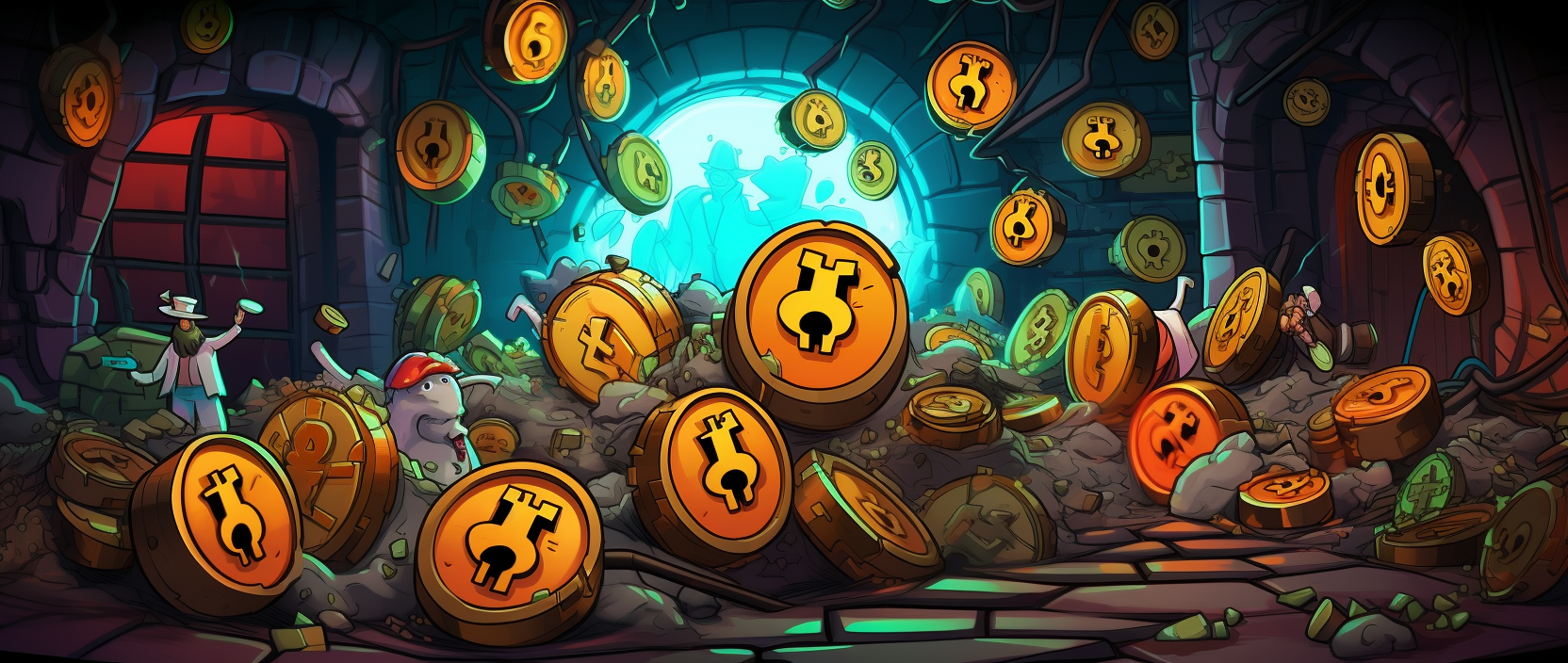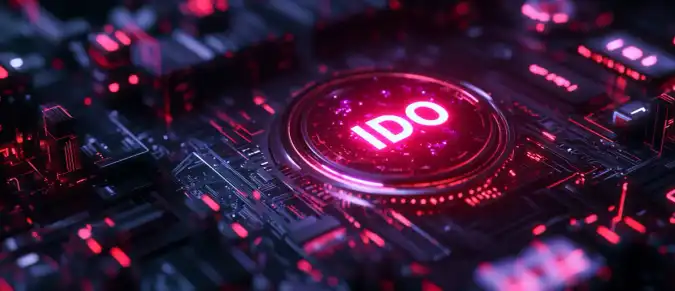IDO Initial DEX Offering is one of the hottest topics in the cryptocurrency market. The crypto community demonstrates particular inventiveness when it comes to finding new ways to launch projects and raise funds. This article presents a complete guide detailing their features and differences compared to ICO and IEO.
At the end of 2017 and in 2018, everyone witnessed the emergence of Initial Coin Offerings (ICO), where teams raised money by selling part of their tokens to users. This created absolute euphoria as these newly minted coins increased in price by thousands of percent once they were listed on exchanges and open for trading.
Contents:
- What is an Initial DEX Offering (IDO)?
- IDO in its most popular form: How are they different from IEO?
- Why Initial Coin Offerings have a low market cap
- Pros and Cons of Initial Token Offerings
- How to invest in IDO?
- Most popular IDO Launchpad platforms

ICOs were mainly deployed through Ethereum smart contracts ERC-20, and they quickly became a leading use case for ETH-based tokens. The first ICOs in 2016 attracted just a few million dollars, but a year later, the average amount reached between 20 to 30 million dollars. Soon after, larger projects like Bancor raised over 150 million dollars.
By the end of the first quarter of 2019, Initial Exchange Offerings (IEO) made a grand appearance.
These IEOs, largely conducted by Binance Launchpad, followed the crowdfunding model of ICOs but projects were much more thoroughly vetted. Since they were launched on popular exchanges like Binance, KuCoin, Huobi, OKx, etc., the exchange teams conducted extensive comprehensive checks, so the number of IEOs was not as numerous as ICOs — the barrier to entry was higher. Besides raising funds, IEOs also benefited from being listed on an exchange that managed their token sales. One of the biggest issues for ICO investors in 2018 was whether an exchange would agree to list their token, while the variety of ICOs was enormous.
What is an Initial DEX Offering or IDO?
It is noteworthy that the original concept of DEX offerings has changed significantly over the years, and in its current most popular form, it has little in common with what was conceived when the first IDO took place.
An IDO is a format of token sale where projects raise funds for their startup by issuing and selling tokens on decentralized exchanges
Essentially, the Initial DEX Offering is a successor to ICO and IEO in the sense that it aims to raise money and launch the project. However, unlike ICO and IEO where tokens are sold before listing, in IDO they are immediately listed on a decentralized exchange (DEX) — hence the name.
The first-ever IDO took place in June 2019 — Raven Protocol. The team behind the protocol decided to use the decentralized exchange Binance — Binance DEX. They listed their token at a set price, and traders could buy it until the "hard cap" was reached. This is how the first IDOs proceeded on most platforms.
Theoretically, this specific way of raising funds had several powerful advantages, including:
| № | Advantage |
|---|---|
| 1 | Immediate trading of coins |
| 2 | Instant liquidity on DEX |
| 3 | Open and fair fundraising |
However, investors were not satisfied. The reason was that these token sales were essentially bought out in a matter of seconds, leaving little chance for ordinary investors to get a share and participate. It gave rise to the perception that they were being scooped up by bots and insiders, and the industry had to adapt to meet the growing demand.
This led to the birth of IDO launch platforms — one of the hottest topics of late 2020 and 2021.

IDO in its most popular form: How are they different from IEO?
In its most popular current form, IDOs are quite similar to Initial Exchange Offerings (IEO) with a few key differences.
In the case of IEO, the exchange vetted the project and conducted the token sale. With IDO — it's a third-party platform that vets the project, while the actual token sale happens somewhat decentralized.
Theoretically, anyone can raise funds through an IDO using IDO platforms, as all they need to do is open a pool for fundraising.
It works quite simply. The project sends a request to the IDO platform, and if they meet the requirements, they are selected for conducting an IDO. The actual process can vary, but the concept is always the same.
There is an IOU pool where users can buy "IOU notes" of the token that the project wants to launch. In other words, investors pay for their tokens in advance, but receive them after the Token Generation Event (TGE), which usually occurs shortly after the IDO itself.
After the successful completion of the IDO and the TGE, the token is immediately listed for trading on the decentralized exchange. In most cases, this occurs on major DEX exchanges, as the predominant number of projects are still built on Ethereum, BSC, Solana, and Polygon.
At this point, we can already see some differences and some similarities between ICO and IEO.
Why Initial Coin Offerings Have Low Capitalization
Unlike initial coin offerings, particularly during the peak of 2017-2018, IDOs typically have a very low market capitalization when they go public. This is usually just a few million dollars, and in many cases even less than a million. This is due to periods of coin distribution among all token holders (including the team, seed, and private investors), except those who participate in the actual initial DEX placement process.
The IDO process itself usually raises a small amount of money. As mentioned above, each participant can buy tokens worth a few hundred dollars, and the total amount raised rarely exceeds $500,000.
What's the point? There are several things to consider:
- Demand is likely to remain high during the price opening. Therefore, good projects can easily take off tenfold as soon as they hit the market, providing a 100-fold return for IDO participants. Even after a 100-fold increase in value, a project starting with a market capitalization of $3 million will be worth $300 million, which is quite reasonable;
- This solves some of the problems of ICO/IEO, when investors rush to sell for a profit and dump the price as soon as the token is listed — this can easily create a snowball effect;
- The amount raised can still be high (several million dollars or even more), but the initial volume of working capital matters in terms of revenue.

Multichain IDO, Launch on Multiple Blockchains: A New Trend
With the above in mind, it's worth noting the growing trend where projects launch their IDOs on multiple IDO platforms to attract more blockchains and a wider range of investors.
For example, a project will conduct one IDO on an Ethereum-based platform and another (or several others) on other platforms, on blockchains like Binance Smart Chain, Polkadot, Solana, or other networks.
This allows users to choose where they want to participate.
Win-Win Option: Token Distribution Through Whitelist
This is another typical part of almost every initial DEX offering — the Whitelist process. Since the demand for these token sales is very high, launch platforms may allow only a limited number of users to participate and provide them with a very limited token purchase amount, usually a few hundred dollars.
To get on the Whitelist, users must perform various marketing tasks, which often include:
- Joining the project's Telegram chat or group;
- Retweeting and commenting on the project's Twitter;
- Liking the project's social media platforms and so on.
This creates a real marketing storm for IDO-participating projects, leading to exponential growth of these communities. It's no surprise that a future IDO project gathers over 100,000 followers on Twitter and as many people in their Telegram groups within days.
Another common criterion is that users must have a certain amount of tokens native to the IDO platform itself. For example, on the popular IDO platform Polkastarter, there are two pools: one open to all and another only for POLS token holders. The competition in the latter is significantly less.
Typically, there will be two rounds of whitelisting: one for those who own the platform's native tokens and one for the general public. Naturally, in the second round, there is astronomical competition, leaving minimal chances of participation. That's why some platforms have moved to another model of guaranteed token distribution.
The above two methods create a giant marketing effect, which helps create demand for the IDO token on the secondary market, something that was often lacking compared to ICOs.

Guaranteed IDO Distributions: What Are They?
To receive distribution in an upcoming IDO, most platforms now require their users to hold their native tokens (as mentioned above) to increase their chances of participation.
However, to avoid lotteries, some platforms have decided to provide guaranteed distribution depending on the amount of their native tokens held by the user. Examples include Kickpad, BSCPAD, TrustSwap, and so on.
For instance, if an IDO wants to raise $100,000 and there are 1000 qualifying participants, each will receive $100.
However, to incentivize larger holders, launch platforms have also created tiers, where the more tokens a user holds, the larger their allocation. This is why prices for many tokens owned by IDO platforms have risen significantly.
Pros and Cons of Initial Token Offerings
As with everything, initial token offerings (IDO) also have their advantages and disadvantages. Let's take a closer look.
Advantages:
- Almost any project can raise funds.
The abandonment of strict IEO verification procedures has given many projects access to crowdsourced capital, which theoretically benefits the industry as a whole. Of course, this can also be a disadvantage — read below.
- Flexibility
Investors don't have to wait long for tokens to be listed on the exchange. The listing usually occurs immediately after the IDO is completed, giving them the opportunity to profit from their investments faster than with ICOs.
- Immediate and High Liquidity
For most projects, it has become a practice to lock up a significant portion of their crowdsourced funds as liquidity on DEXs, where the token begins trading. Moreover, many projects immediately offer staking programs to encourage holding.
- Transparency
Since everything happens on the blockchain, everyone can check token contracts in advance (if they are publicly available, of course).
Disadvantages:
- Unclear verification process: a breeding ground for fraud
Continuing from the first advantage, the fact that there is such high demand for IDOs allows scammers to create little-known projects and launch them quite quickly.
- Expensive participation criteria
While most platforms have a public round in which anyone can participate, the chances of winning are practically nonexistent due to sky-high competition. That's why users have to hold a large amount of platform tokens to make significant investments and substantial income.
- Disproportionate allocation distribution between seed, private, and public investors
Most IDOs reserve a large portion of tokens for the team and seed/private round investors. As mentioned above, vesting for a certain period helps prevent a token price collapse. However, as soon as the time comes for coin unlocking, this almost always leads to a massive sale of altcoins and profit-taking. Pro tip: By monitoring smart contracts, investors can easily see when such an event occurs (usually weekly, monthly, or quarterly).
How to Invest in IDO?

Participating in an IDO is a process that can vary depending on the chosen platform. However, there are several requirements that most projects usually follow, regardless of the IDO platform.
Step #1:
The vast majority of IDO platforms require their investors to complete the KYC/AML verification process before allowing them to participate. This is done because the regulatory framework for cryptocurrencies in most countries has become much stricter. To avoid any potential legislative issues, almost all IDO projects conduct KYC. This is also the reason why US citizens are rarely allowed to participate.
Step #2 (optional): Hold Launchpad Tokens
Almost every platform requires potential investors to hold their tokens. If they want to be eligible for allocation, they must own a certain amount of the IDO platform's tokens or provide liquidity in one form or another.
Step #3: Whitelist Process
As mentioned above, to be eligible for allocation, users must be whitelisted. In addition to KYC verification, they also need to perform various tasks such as subscribing to certain Twitter pages, retweeting certain messages, and joining certain Telegram or Discord groups.
Step #4: Connect a Cryptocurrency Wallet to the Platform
To participate in an IDO, users must connect a cryptocurrency wallet to the IDO platform to first invest and then receive their tokens. There are many cryptocurrency wallets, with the most famous being MetaMask.
Step #5: Learn How to Use DEX to Sell Tokens
Assuming you manage to get tokens into your wallet, you will eventually want to start trading them.
To access immediate listing, you should familiarize yourself with how decentralized cryptocurrency exchanges, where the token will be traded, work.
Most Popular IDO Launchpad Platforms
DAO Maker is an incubator that uses the power of Social Mining to help projects build a community, and then uses the project's token to convert the community into DAO members.
Polkastarter can be considered a pioneer in the field of project launches, as it was one of the first platforms. It is also currently the largest. Projects on Polkastarter usually gain tens, if not hundreds of thousands of subscribers, and their community grows exponentially.
Red Kite is part of the PolkaFoundry ecosystem and uses its own PKF platform token as a utility token. Investors can hold PKF tokens to join the Red Kite platform and participate in token sale rounds for selected and vetted crypto projects. There are 4 Tier levels on this platform:
- Dove;
- Hawk;
- Eagle;
- Phoenix.
BSC Pad is the first IDO platform created for projects in Binance Smart Chain. Interestingly, users receive guaranteed allocations depending on the number of BSCPAD tokens they own, eliminating the lottery process but also reducing allocation sizes depending on fundraising goals.
GameFi is an IDO platform exclusively for games and serves blockchain gamers, investors, and traders in one place. The GameFi ecosystem's ranking system is divided into four Tiers, depending on the amount of staking in US dollars:
- Legend;
- Pro;
- Elite;
- Rookie.
Depending on the rank, the GameFi ecosystem will have different advantages and requirements.
The above platforms are some of the most popular IDO launchpads.
In 2021-2022, initial DEX offerings (IDOs) took center stage in the cryptocurrency market and continue to interest investors.



